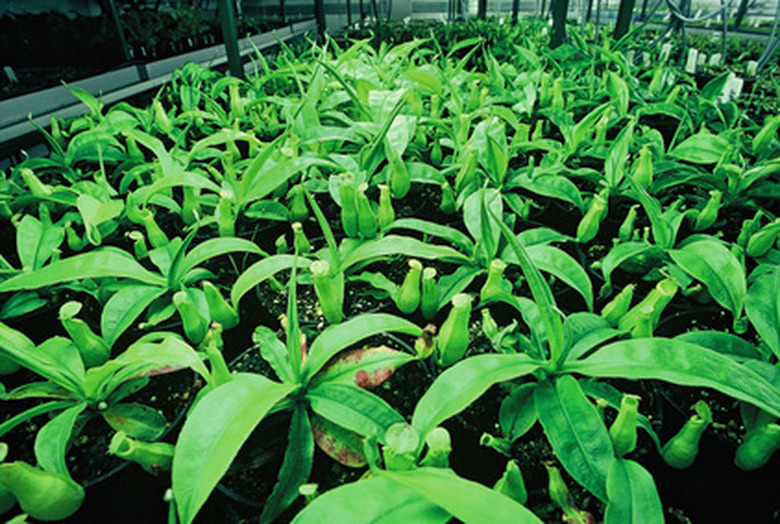How To Grow Vegetables In The Basement
Growing vegetables indoors is a viable option if you don't have any suitable outdoor area for your plants. A basement, if the temperatures are warm enough, may provide enough space for your garden and is less likely to be disturbed by pets or children. Providing warmth and light are the two biggest challenges when growing vegetables in a basement, but with the proper equipment even these can be overcome and a successful garden can result.
Step 1
Fill seedling pots or seedling trays with a sterile potting mix. Plant one to two seeds per pot or plant seeds two inches apart in trays to the depth recommended on the seedling envelope.
Step 2
Water the soil until it is evenly moist, then cover the pots or trays with plastic wrap. Place the pots or trays on top of a seedling germination mat and set the temperature to 65 to 70 degrees Fahrenheit, unless you are growing peppers which require 80 degrees Fahrenheit.
- Growing vegetables indoors is a viable option if you don't have any suitable outdoor area for your plants.
- Place the pots or trays on top of a seedling germination mat and set the temperature to 65 to 70 degrees Fahrenheit, unless you are growing peppers which require 80 degrees Fahrenheit.
Step 3
Remove the plastic once seedlings appear, approximately seven to 14 days after sowing for most vegetable varieties. Water the soil as needed to keep it moist but not soggy.
Step 4
Place the pots under grow lights that are positioned three to six inches above the tops of the seedlings. Leave the lights on for 14 hours a day. Adjust the height of the lights as the plants grow to maintain this distance.
Step 5
Leave the germination mat on and set to 70 to 75 degrees Fahrenheit if the basement is cooler than 75 degrees. If the basement is warm, the germination mat is not necessary.
- Remove the plastic once seedlings appear, approximately seven to 14 days after sowing for most vegetable varieties.
- Leave the germination mat on and set to 70 to 75 degrees Fahrenheit if the basement is cooler than 75 degrees.
Step 6
Transplant the seedlings into permanent pots once they produce their third set of leaves. Use eight- to 12-inch pots, depending on the expected mature size of the plants. Sow them to the same depth in their new pot that they were at in the seedling pot or flat and continue to water as needed to keep the soil moist.
Step 7
Fertilize the plants once they are transplanted into their permanent pots. Use a soluble fertilizer every two weeks, following label instructions for application amount and method.
Step 8
Harvest vegetables as they ripen to encourage further fruit set on the plants. Harvest leafy vegetables, such as spinach, when the outer leaves are the desired length. Leave the inner leaves in place so the plant continues to produce.
- Transplant the seedlings into permanent pots once they produce their third set of leaves.
- Sow them to the same depth in their new pot that they were at in the seedling pot or flat and continue to water as needed to keep the soil moist.
Tip
Place grow lights on a timer so you don't have to remember to turn them off and on every day. Grow dwarf or container varieties of most vegetables in the basement. Herbs and cool-weather leaf vegetables also do well indoors. If you don't have access to grow lights use one warm and one cool fluorescent light.
Warning
If the plants yellow or begin to wilt, they likely are not receiving enough light or are too cold. Check that the temperature in the basement is correct for the types of vegetables you are growing and adjust the amount of light provided. Plants grown only with artificial light will not produce as many fruit as the same plants grown under natural light. Due to poor air circulation, basement grown vegetables are more prone to mildew and other fungus infections. Use fans in the basement for additional air circulation around the plants.
Things Needed
- Pots
- Potting soil
- Germination mat
- Seeds
- Plastic wrap
- Grow lights
- Fertilizer
